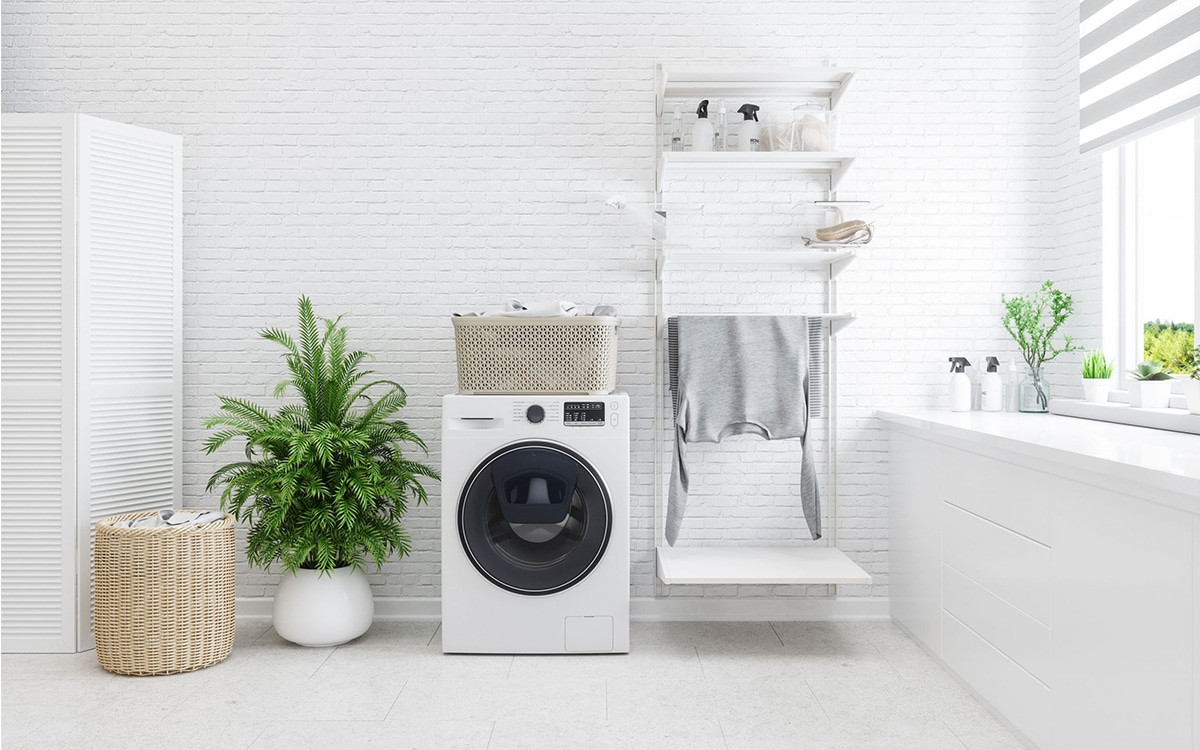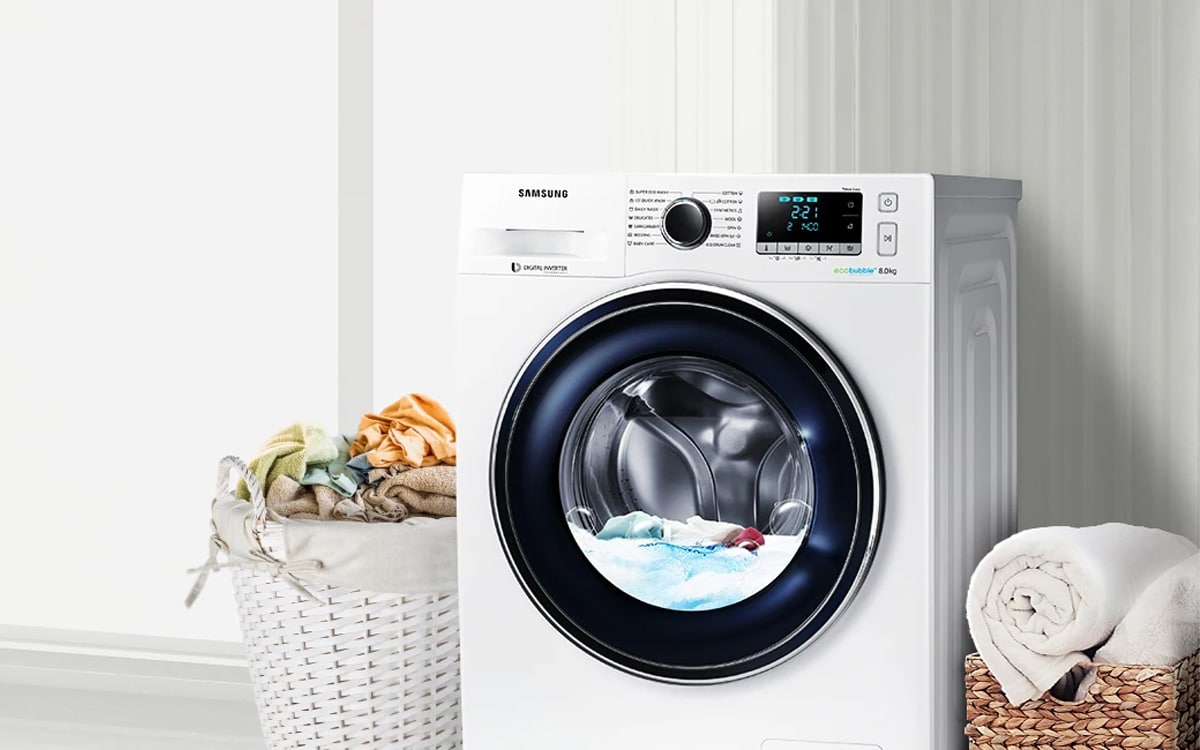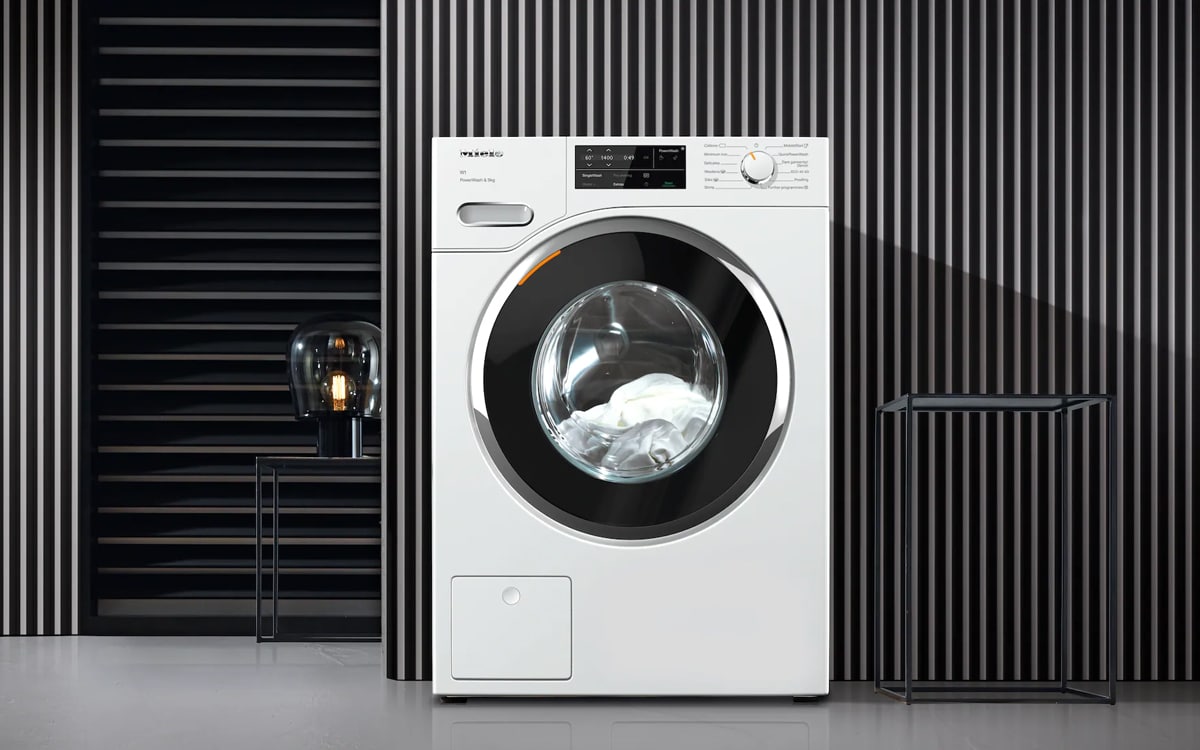Energy-efficient washing machines are kind to the planet, and also very kind to your wallet. They cost far less to operate, so you can do all of your laundry tasks, confident in the knowledge that you’re saving heaps of cash!
Having trouble finding a truly eco-friendly washing machine that protects the planet and your finances? Then you’ll need to know how to use the energy rating system to your advantage! In this guide, our Reliant tech experts are going to find out what the best energy rating for a washing machine is. So you can shop with total confidence!
What Is An Energy Rating?
An energy rating is simply a metric used to determine exactly how efficient a given appliance is. It refers to the number of kilowatts used by an appliance per hour. The more kilowatts used per hour, the less efficient the appliance is.
Luckily, the efficiency of each appliance is clearly denoted through the use of a sliding scale. This scale is from “A” to “G”, with “A” used to refer to the most efficient of appliances, and “G” used to refer to the least efficient.
Any appliance with an energy rating of “A” is considered to be incredibly efficient, using fewer kilowatts per hour. Appliances rated “G” are the least efficient, and use more kilowatts per hour!
By simply referring to the sliding scale, you can quickly understand just how efficient a washing machine is.
The energy rating system is incredibly useful. It allows consumers to make more informed decisions on their appliances. It also incentivises manufacturers to create more efficient appliances in order to attract more customers!
What Is The Best Energy Rating For A Washing Machine?
If you were looking for maximum efficiency from your new washing machine, you’d want to look for an A-rated model. With an A-rating, you can be sure that your new washing machine is at the peak of efficiency.
In prior decades, it was actually incredibly difficult to find “A”-rated washing machines. Nowadays, however, you’re more likely to find them in abundance in stores and online. As such, you might find yourself with a number of potential washing machine candidates for your kitchen.
If you’re trying to decide between two different “A”-rated washing machines, then there are a few other things worth checking.
Energy rating labels include plenty of supplemental information just below the “A” to “G” scale. This information tells you about all kinds of things. From exactly how much energy a washing machine uses for every 100 cycles, to the maximum capacity of the unit. It’s worth comparing the information on these labels between models. If two units have similar capacities, then we’d recommend going for the model with the lowest energy consumption.
However, if you want a washing machine with a greater capacity, then it might be worth going for the washing machine with higher consumption!
”A”-rated washing machines are the most efficient models on the market. But it’s worth ensuring you find a washing machine that also meets your needs. Don’t grab an efficient washing machine that lacks the vital features you need!
While it’s always best to go for an “A”-rated washing machine, you’ll need to be sure of what you want from one. Larger washing machines may consume more electricity, but provide enough space for you to wash your entire family’s clothes!
Why Do Energy Ratings Matter?
As we mentioned above, energy ratings make it much easier to choose the perfect washing machine. If you’re concerned about protecting the environment, then looking out for the “A”-rating can make your decision much simpler. And thanks to the handy supplemental information noted just below the energy rating itself, you can also make an informed decision between “A”-rated models.
You can also guarantee that a washing machine with a greater energy rating will be less expensive to operate. With a lower amount of energy being used for each cycle, there will be a far smaller impact on your monthly energy bills.
How Are Washing Machines Rated For Energy Consumption?
Energy rating labels show us not only how efficient a washing machine is, but also how much energy it uses. It notes this based on the number of kilowatt hours it uses for 100 washes. To determine this information, manufacturers will put their models through a number of rigorous tests. These tests help to inform the final energy rating, and how much energy is used within 100 washes.
The tests most often involve running a number of cycles and measuring the amount of energy used in each of the cycles. A number of variables are often included as part of the tests. Including changing the water temperature, or the number of clothes inserted in the drum.
As such, you can count on an energy rating label to truly give you a great sense of how efficient a unit is!

Are Lower Energy Ratings Bad?
Not necessarily! You might assume that a washing machine without an “A”-rating should be avoided. While it’s worth looking for a greater energy rating for energy efficiency, you shouldn’t worry too much about buying a washing machine with a lower rating. For instance, a “B”-rated washing machine wouldn’t consume much more electricity than the rank above.
A “B”-rated washing machine might only cost you an extra £10-£20 on energy bills across the entire year! “B”-rated washing machines may also be far cheaper to buy, so you might save more money up-front on the unit!
The difference between an “A” and “G”-rated washing machine is significant. But there is actually far less extra energy used by a “B”-rated washing machine, compared to an “A”-rated one.
A washing machine with a lower rating may also offer several extra functions that are useful to you. There’s no point in sacrificing useful features just to save a couple of extra pounds on your energy bills!
Of course, the difference in energy consumption between an “A” and “G”-rated washing machine is much greater, and will require much more careful consideration. But if you’re on the fence about opting for a “B”-rated washing machine over an “A”-rated one, don’t fret too much! Simply go for the one that’s most beneficial to you!
Do Washer-Dryers Consume More Electricity?
Technically speaking, a washer-dryer can be just as efficient as a washing machine, when performing a washing cycle. A washer-dryer only consumes more electricity if a drying cycle is performed immediately after.
It’s no secret that tumble dryers consume a fair amount of electricity. In order to create such warm temperatures for drying, a lot of electricity is needed. So, naturally, washer-dryers are often classified as consuming more energy than ordinary washing machines. You’d have a much harder time finding an “A”-rated washer-dryer than an “A”-rated washing machine.
However, if you were to only use the drying function sparingly, then a washer-dryer could still be incredibly efficient.
Washer-dryers do technically consume more energy if the dryer function is used. When the dryer function is not used, a washer-dryer can still be just as efficient as a standard washing machine.
Again, whether or not you opt for a washer-dryer depends on what you need from the appliance itself. If the appliance would be highly useful in your daily life, and the dryer function would make your life much easier, then it might be worth opting for one anyway! It might cost you slightly more to operate, but it would make laundry tasks a breeze.

How Can You Make A Washing Machine More Energy Efficient?
If you already have a washing machine, or you’ve settled on a lower energy rating, don’t worry! There are plenty of things that you can do to lower the energy consumption of your washing machine. Saving countless pounds, and protecting the environment!
Lower The Temperature
One of the simplest ways to make your washing machine more energy-efficient is to lower the temperature of the water. You might assume that most of the electricity used by a washing machine is dedicated to spinning the drum! This actually isn’t the case. Instead, the process that consumes the most electricity is heating up the water.
Before the washing cycle fully begins, your washing machine must first heat up the water to the perfect temperature. The higher the temperature, the more energy is needed to create and then maintain it.
While higher temperatures are great at killing bacteria, and really cutting away at stubborn stains, colder temperatures can still get the job done! In fact, there are a number of laundry detergents that are formulated specifically for use with cooler water. So, you can still achieve a perfect clean, while also reducing the amount of energy used by the washing machine itself!
Make Use Of Eco Mode
Eco mode is a specific cycle type that can be found on many modern washing machines! It’s specifically programmed to use up less electricity than other modes. It does this in a number of ways. First, it lowers the temperature of the water. As you know, this naturally leads to a massive decrease in energy consumption. Secondly, in order to allow the cooler water to get to work, the washing machine also operates at a slower speed. By slowing the spin speed, less energy is consumed, and cooler water can still do the job of much warmer water.
It’s totally worth using eco-mode on a washing machine. The specially-programmed mode uses cooler water and performs a slightly longer cycle, to ensure a full wash while using half the energy!
An eco-mode cycle usually takes much longer to finish than a standard washing machine cycle. As such, you will need to carefully plan your laundry schedule accordingly. However, the significant reduction in energy usage is incredibly useful. Some washing machines are able to cut energy usage down by half through eco mode!
Fill Your Washing Machine!
It’s important to make full use of your washing machine’s drum capacity. A washing machine that’s half-full will still use the same amount of water as a washing machine that’s sufficiently full. This means that in order to wash a lot of clothes, you’d need to use a significant amount of water.
Filling your washing machine ensures that not a single drop of water is put to waste. It also means that you can wash more clothes at once, which cuts down on the number of cycles you need to perform.
Many modern washing machines actually come with smart sensors installed in the central drum. These are able to accurately weigh your clothes as you place them into the drum. By using this weight information, the washing machine can then decide just how much water and electricity is needed. This means that you can fill the washing machine as you like, confident that only the right amount of water will be used!
Frequently Asked Questions
What Is The Best Energy Rating For A Washing Machine?
The best energy rating for a washing machine is the “A”-rating. Washing machines with this rating are considered to be the most energy-efficient. The rating is decided by how much energy is used by the washing machine in a set period. The amount used by a washing machine is listed on its energy rating label.
Is Energy Rating D Good On A Washing Machine?
If you want maximum energy efficiency from your washing machine, you’ll want to opt for a model with an “A” rating. However, a “D”-rated washing machine is not a bad option. Washing machines with this rating are often very simple, and thus very affordable. They’re also much more efficient than the lowest-rated models at “D”.







0 Comments